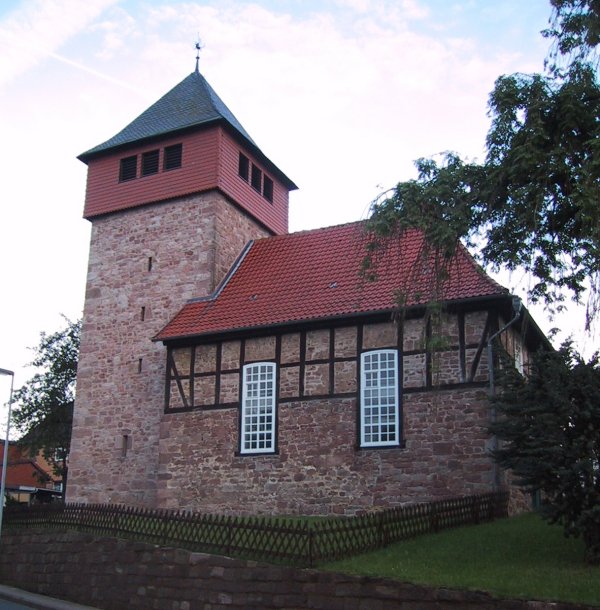
This is the little Lutheran church in the German village of Schlarpe (population 574), which is about twelve miles NW of the university town of Goettingen, which in turn is about fifty miles SSE of Hanover. The church is stone, with walls in places almost two feet thick, and dates back to about 1300.
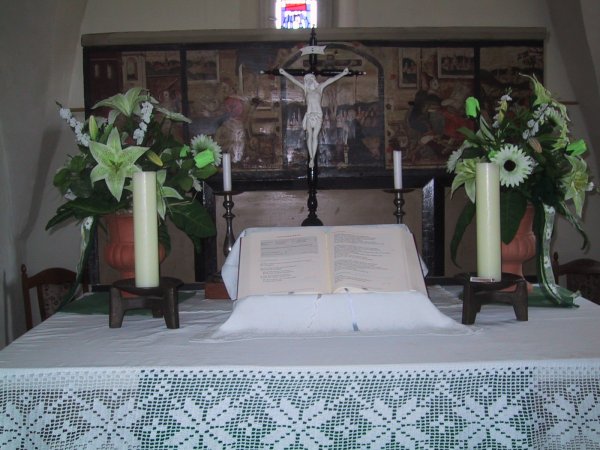
The main altar of the Schlarpe church is quite small, and to our surprise supports a crucifix. The triptych behind the altar is extremely old, painted on wood, and dates back to pre-Reformation days. It has supposedly been in the church since the church's founding, but actual historical details on its provenance (and in fact, the provenance of the church itself) are very thin.
Worship is not held in the church on every Sunday, and it was our poor luck to be there on a Sunday when no service was scheduled. We did get the impression that that community (and the ones from the small towns in the vicinity) is fairly high church.
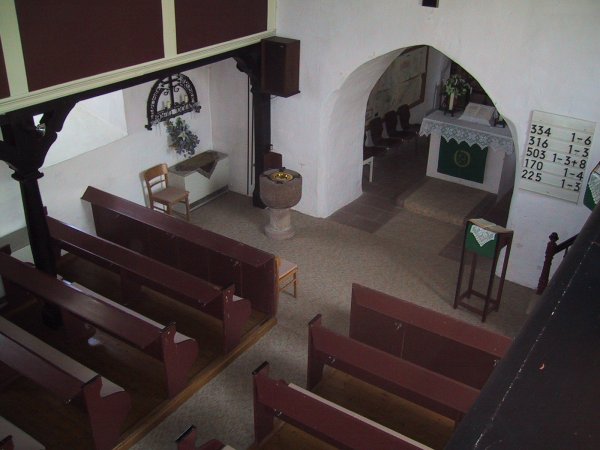
This ia view of the interior of the Schlarpe church from the choir loft. Note that the altar is in the tower portion of the structure, through an archway in the stone that is almost four feet thick. The main pulpit is just out of view toward the right. You can see the beginning of the little railing up the stairs to the pulpit.
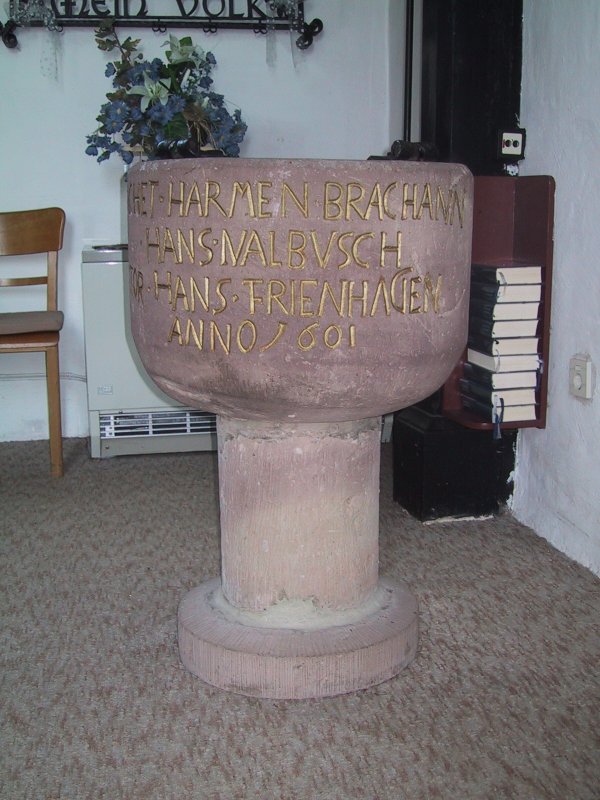
The stone baptismal font has been in the church since 1601, and is carved from local basalt.
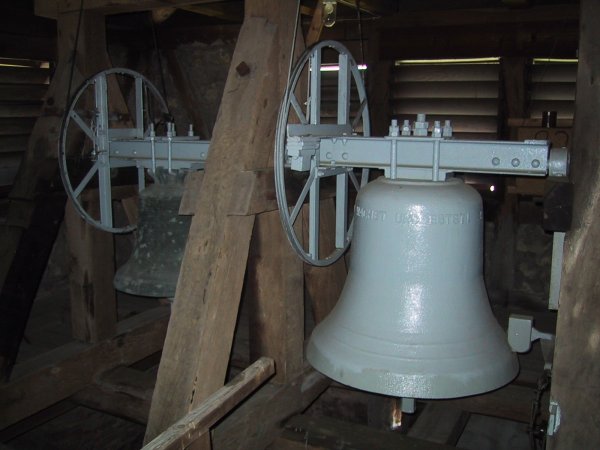
There are two bells in the tower: One of ison (left) and one of bronze. The bells are not especially ancient; the bronze bell dates from 1897, and the iron bell from 1917. Although rung by pull-ropes for centuries, a motorized system was installed after WWII and the bells can now be run by pushing buttons in the vestry. The iron bell has the simple inscription, "WACHET UND BETET!" (Awake and pray!) The bronze bell has a more complex inscription which includes the foundry name and the circumstances of its presentation to the church in 1897.
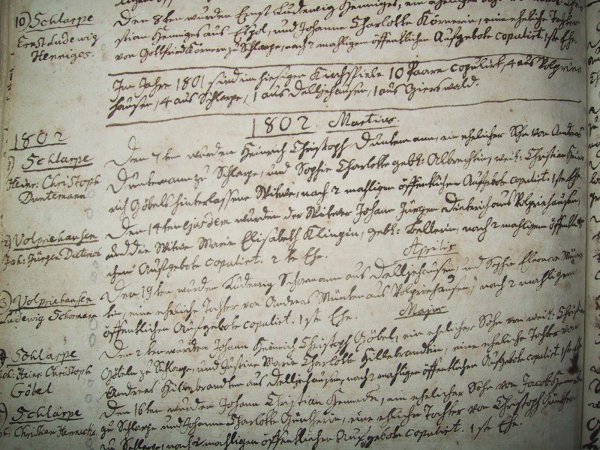
We spent a day with the old church records kept by the cluster of Lutheran parishes around Schlarpe, scouring hundreds of parchment pages dating back to 1722 for inscriptions relating to the Duntemann family. This image will give you some idea of the challenges we faced. The first record here until the 1802 heading is the wedding record of my great-great-great-great grandfather, Heinrich Christof Duntemann.
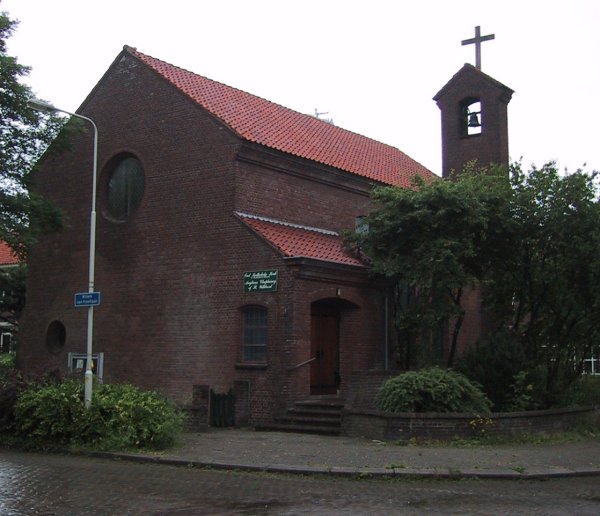
It was a drippy day in Arnhem in the Netherlands when we visited St.Willibrord's Old Catholic parish. The church was built hurriedly in 1942, in the thick of the War, just before the Nazis forbade all construction in their occupied territories. It is thus very plain and simple, with few windows and not even gutters except over the main church door. There is an attached rectory where the pastor, Rev. Peter Feenstra, lives with his wife and children. Rev. Peter is married to Rev. Angela Berlis, one of the first two women ordained to the Old Catholic priesthood by the Old Catholic Church in Germany, in 1996. Their personal Web page (albeit in Dutch) is here.

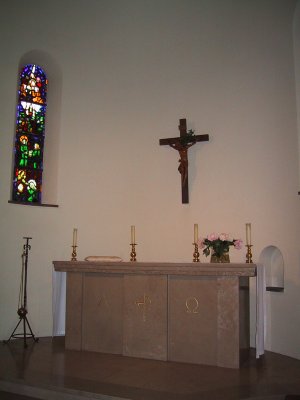
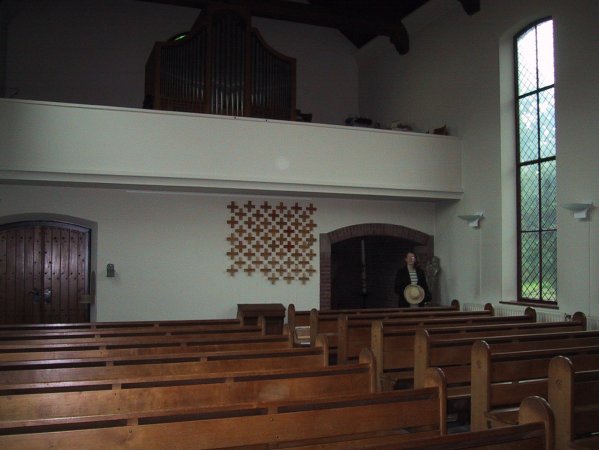
A view toward the rear of St. Willibrord's, taken from the front of the church.
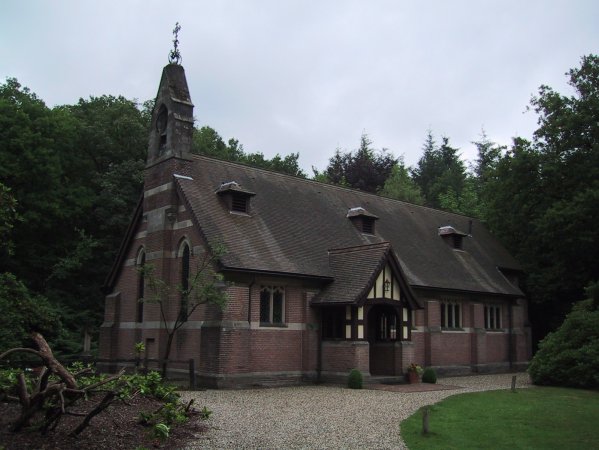
The Rev. Sjoerd Bonting is an Anglican chaplain in the town of Goor, in the Netherlands, and this small chapel on the grounds of an estate near Goor is where he says Mass every Sunday. The chapel was constructed in 1900 and is used occasionally for weddings but not for any other regular religious services. Unfortunately, the interior is so dark that I was not able to take acceptable photos inside.